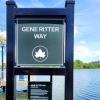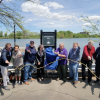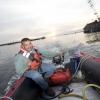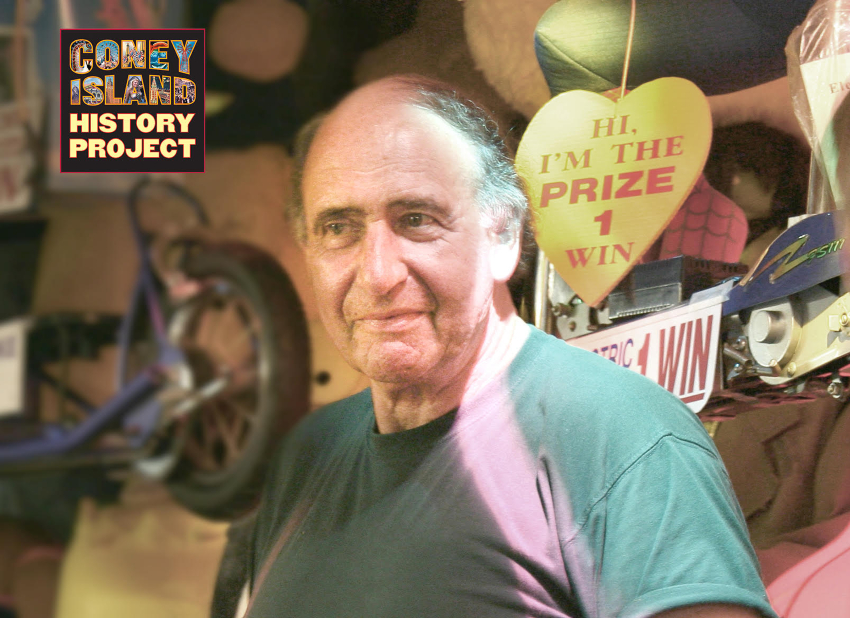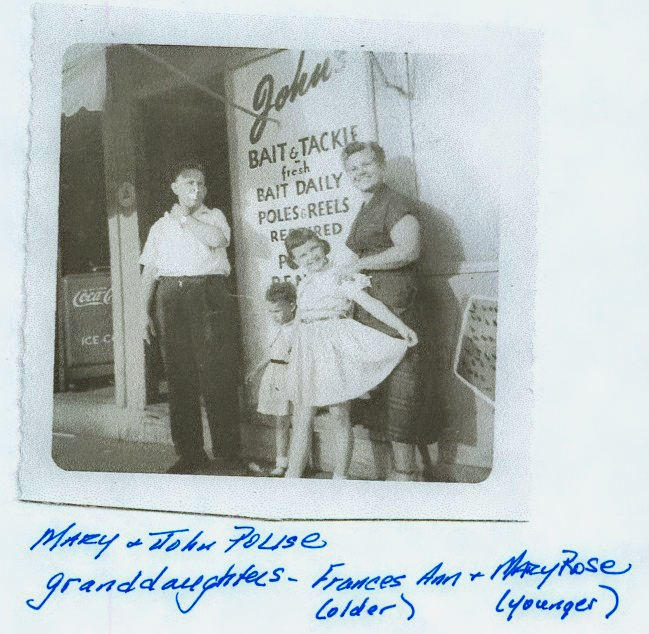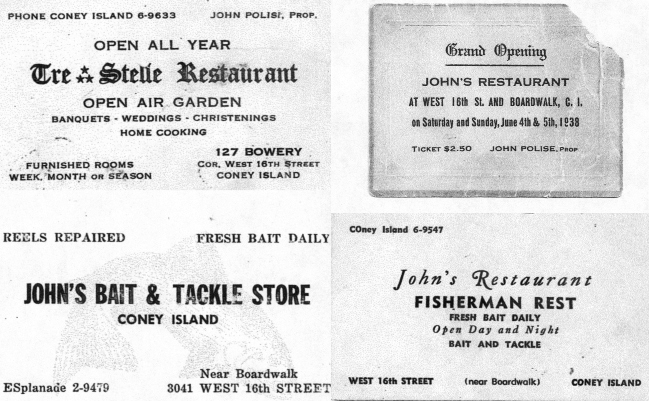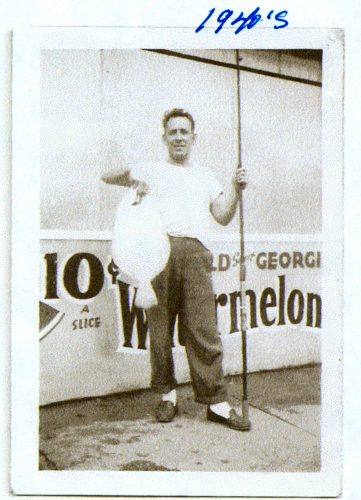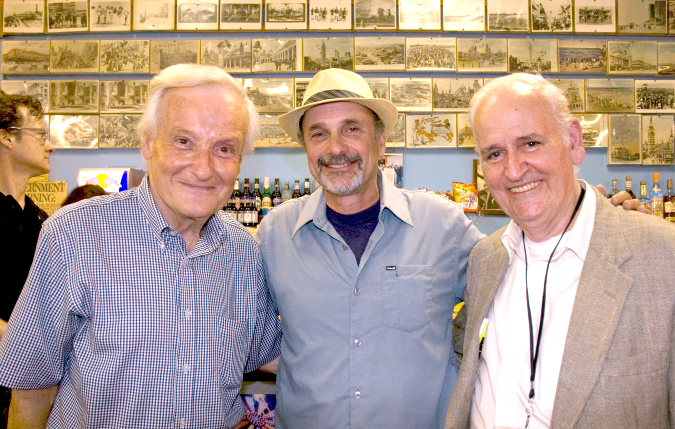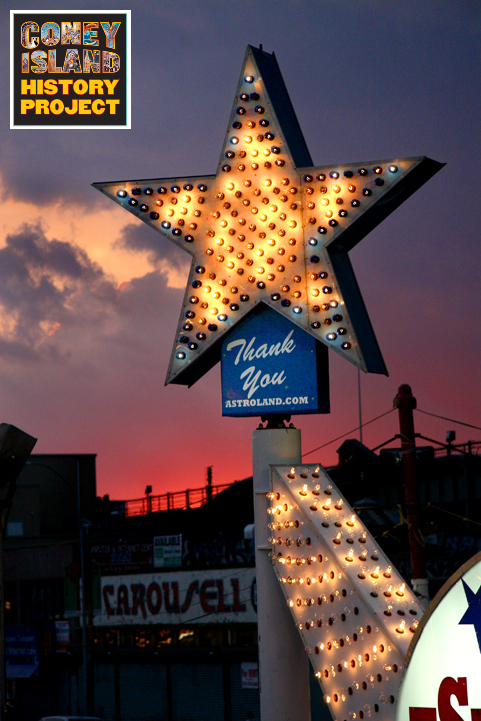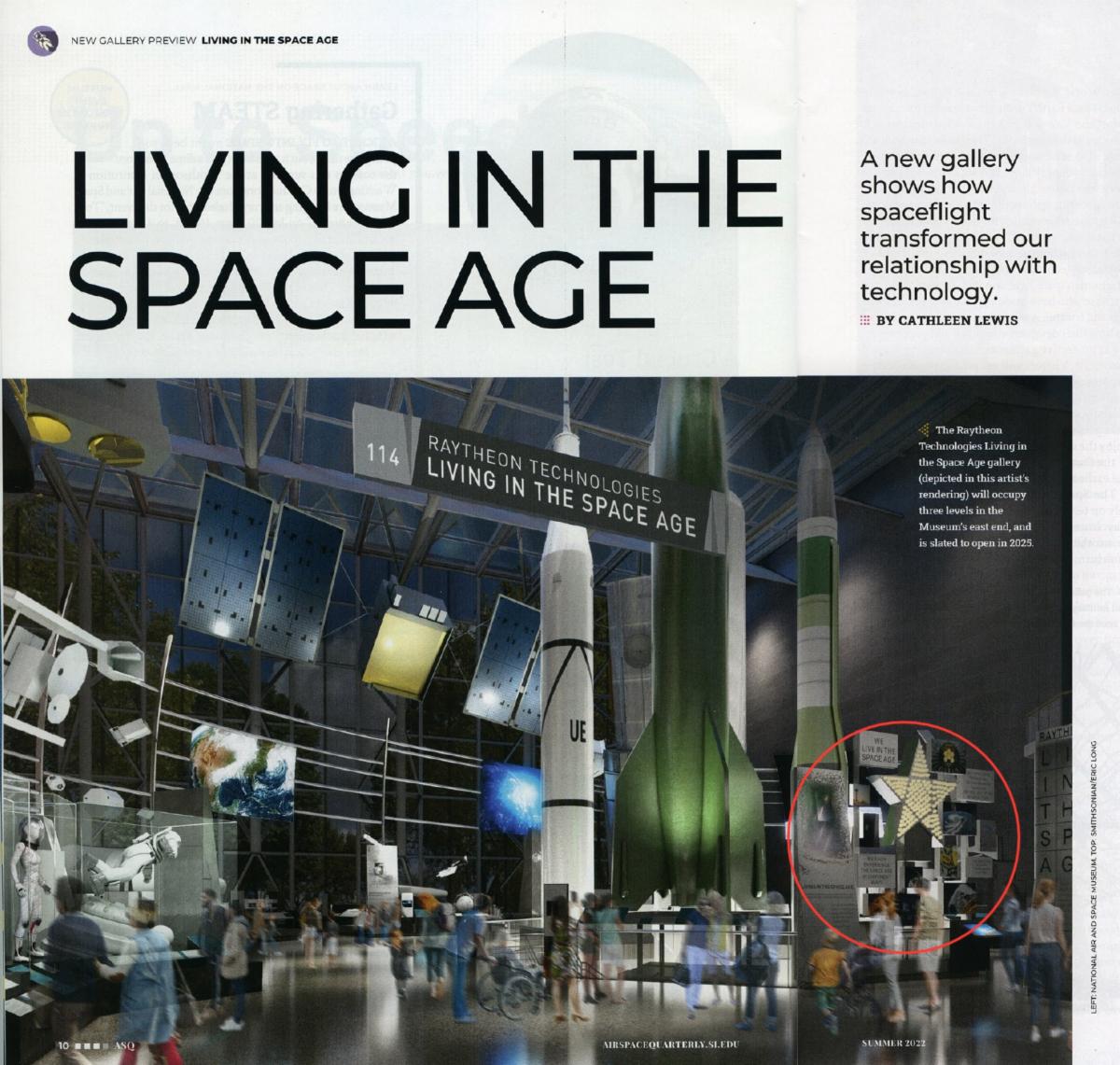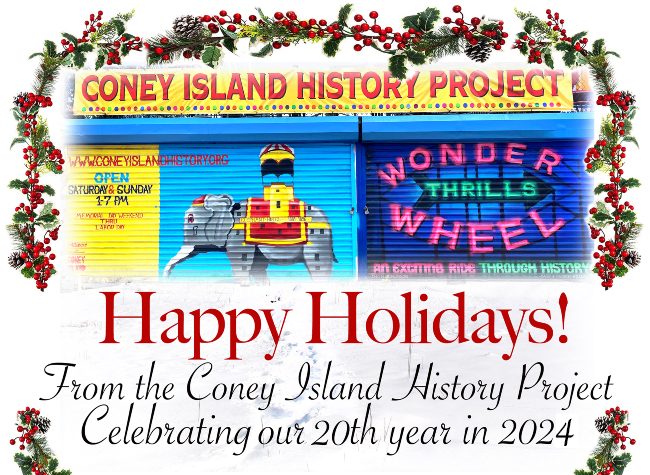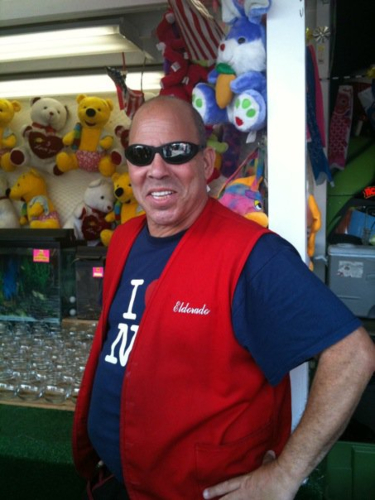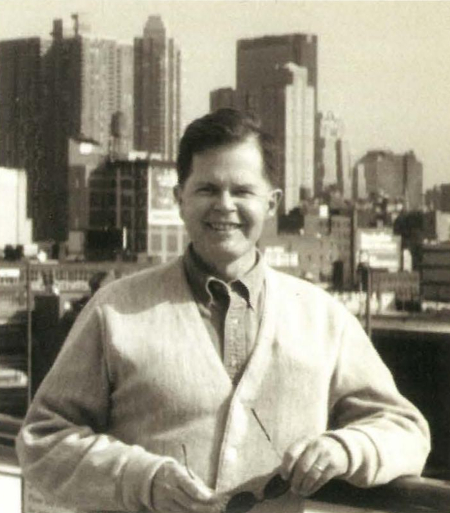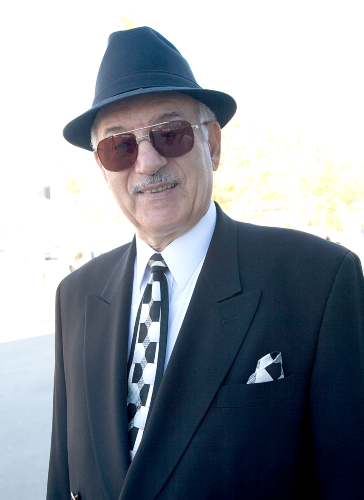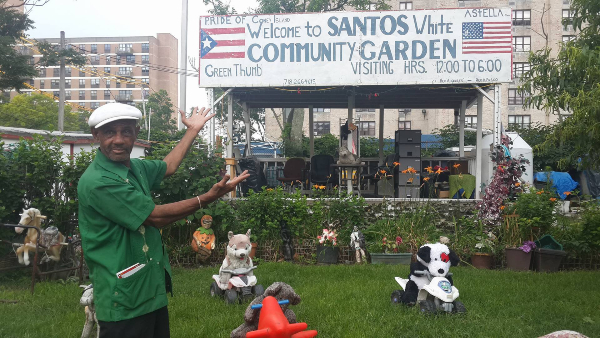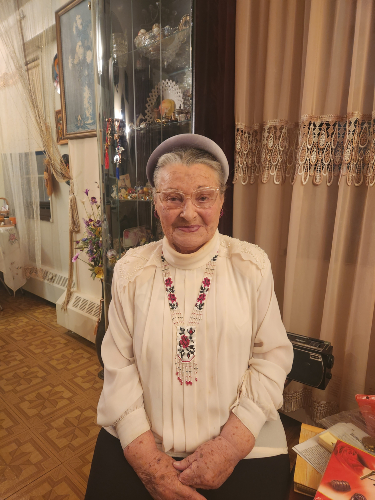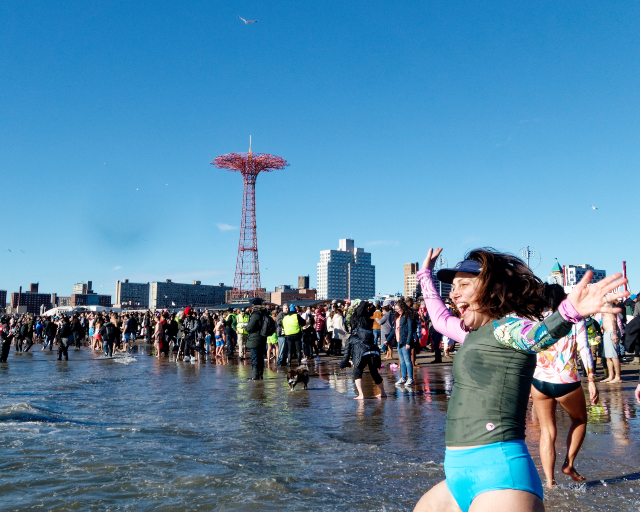
Photos and credits clockwise from top right: Benny Harrison (Charles Denson), John Dorman (Philip's Candy), Ralph Avella, Gloria Nicholson, and John Rea Sr. (Coney Island History Project).
As we near the end of 2024, the Coney Island History Project pays tribute to two Brooklynites who recorded their stories for our oral history archive and who we lost this year: Benny Harrison and John Rea Sr. We also honor John Dorman, Ralph Avella, and Gloria Nicholson, whose passing in 2023 we learned about too late to include in last December’s post.
We received emails from their relatives that said: “Unfortunately he passed away a few months ago but my family and I love to listen to his interview as a lasting reminder of him” and "I've listened to her interview and it warms my heart to hear her voice" and “I have to tell you that having your audio of his memories and history of his life in Coney Island is such an incredible gift. I listen to it often. I just love hearing his voice.”
All five narrators or their families worked in Coney Island’s amusement area. Their oral histories, recorded by Charles Denson over the past fourteen years for the History Project’s Oral History Archive, captivate, inspire and inform us, and they will never be forgotten.
If you’re spending the holidays with family, we strongly recommend recording the stories of your oldest relatives using the voice memo app of your phone. The Coney Island History Project records interviews in English, Russian, Chinese, and other languages with people who have lived or worked in Coney Island and adjacent neighborhoods or have a special connection to these places. If you or someone you know would like to record a story remotely via phone or Zoom, sign up here to schedule an appointment.
“I had a store in Feltman's. We used to open up all year round on the weekends because they kept the carousel open. And Faber's Arcade was there also. During the weekends, people used to go on the boardwalk. When it got cold, even in the winter, they would come down. And I would have a blower there, and [it] would blow out boiling vanilla, so it would make people salivate. I would make the caramel coconut popcorn in a big copper kettle on a platform where I used almost like an oar for stirring the caramel corn and it would inundate the entire place with this wonderful, sweet aroma. And we would do a lot of money at that time. On a Sunday in February, for example, provided the sun was out, maybe $1,000 in a day.”
Benny Harrison grew up in Coney Island during the 1940s and '50s, and at the age of 12 began working in his father’s candy factory. He continued in the candy business as a teenager with a stand at Feltman’s Restaurant that he and his mother operated. When Feltman’s closed, they became Astroland’s first tenant. During the last ten years Benny’s stands on West 12th Street next to the Coney Island History Project entertained thousands with quirky games and attractions including his dancing girl, Miss Coney Island, and an animated diorama of Coney Island. He passed away on March 11, 2024. Read "Benny Harrison: A Life in Coney Island" by Charles Denson on our news blog.
“Well, I came in 1947, September. Maybe in the end of the year, I got the job at Peluso. I was a first class machinist from the other side. I went to work with Alfa Romeo, a big company. Peluso would do very little machine work. When I took over Peluso, I was doing a lot of machine work: Wonder Wheel, Cyclone, Steeplechase Park. The roller coaster, the Parachute. I would make all new parts for them. When they wear out the parts, they will come to me to make a new one. I will repair every ride on Coney Island. I had a lot of machine work from the airport too. They would bring it to me. First the shop was on West 8th Street, across the street from the Bonomo factory. You know, the candy factory.”
Machinist John Rea emigrated from Naples, Italy, and began working at Peluso Machine and Iron Works in Coney Island in 1947. He bought the business, and operated it until his retirement in 1966. He repaired or worked on nearly every famous ride in Coney Island. He was on call 24 hours a day and could build any part for any ride, an important skill that saved numerous operators who could not afford down time in Coney Island's short season. In 2016, The Coney Island History Project inducted him into the Coney Island Hall of Fame as one of the “Wizards of West 8th Street," where his shop was located. John Rea passed away on February 22, 2024 at the age of 99.
"We had a puller machine and we had a wrapping machine. Taffy pull, taffy wrap, taffy being cooked. You could see it right from the street. You walk up to the window and it was right there. Yeah, when I came to work for Philip's, there was one candy shop, and then next to the candy shop was a refreshment [stand] that's strictly hot dogs and drinks. Then there was a milk stand. No ice cream, just milk, buttermilk, milkshakes. And then there was a light lunch behind us. We got along with everybody. And then, you know, in those days the bars had nice people. I remember on one of the signs, it said, ‘Tables for the Ladies.’ Because that time the ladies didn't go in the bar, they’d sit in the restaurant part. One was the Hollywood Bar and the other one was the Mardi Gras Bar. And that's years ago. They had movies there, sound movies. And you have a hot dog and you watch the movies. The gentleman at the bar having a drink. the kids and wife, hot dogs and cold drinks."
A Coney Island classic, Philip’s Candy Store originally opened in the Stillwell Avenue train terminal in 1930, but John Dorman began working there in 1947 when he was seventeen. He left in 2000 when the city would not renew his lease. In his oral history, Dorman recalls many regular customers, including transit workers who would visit for coffee and cookies; taffy pulling and wrapping machines that visitors could watch through the window; and businesses that used to operate in the terminal. John Dorman reopened Philip’s Candy in 2002 in Staten Island and his daughter Maria continues to run Philip's today. John Dorman passed away on December 28, 2023 at the age of 93.
"Some of these guys I worked with they would want to put on a little bit of a show for people that were out on the boardwalk and watching. So they would go up with me, particularly one of the biggest guys, he was an older guy in his thirties. And what we would do just before we hit the top, he come on top of me. Because the [strap], it'd be very loose. I mean very loose. You could slide out from underneath. And I'm 16 years old. I'm holding onto that thing like dear life, literally. So he’d lean over and put all his weight on my side. And as we hit the top and free fall, he would yank on the right side and I would yank on the right side and we'd flip the seat. I swear to God, this is true. I've done this about three times, okay. And you come down upside down. Now, before you hit the bottom. You got to right the seat because your head is there and there’s these shocks and you're going to break your neck if you don’t. And so you got to let go when you're, you know, 30, 40 feet above the bottom before it hits."
Ralph Avella was the youngest member of the Coney Island Parachute Jump's operation crew. Bensonhurst native Avella was sixteen years old when he began working on the landmark ride in 1961 after graduating from Brooklyn Technical High School. This interview is probably the best description ever of how the Jump operated and what it was like to ride it. As part of his job, he says he rode hundreds of times including windy days when it was the most terrifying ride you could imagine. His recollections of the crazy stunts that the crew performed on the ride such as flipping the seat are classics! Ralph went on to a career in the NYPD and later became a lawyer with a practice in Brooklyn. Ralph Avella passed away on June 12, 2023 at the age of 78.
"During the summertime at least I ran free to the beaches and the Bowery and all the rides. And everyone knew me. I would trek back and forth from Jones Walk to my father's place of business to bring him his lunch. But I have very fond memories of the rooming house, the people that used to come each season. Downstairs at the time, oh my goodness, I can remember distinctly. Do you remember when you had to hit the hammer and the bell would ring? The high striker was right outside our window. The winters were miserable because the four of us lived in this one room during the wintertime with no heat and no electricity. I mean, yeah, we were poor people. We came from really remarkable backgrounds."
Gloria Nicholson was born in Coney Island in 1940 and grew up in a rooming house that her mother Josephine Boyce managed on Jones Walk and the Bowery. It overlooked the Virginia Reel and Wonder Wheel, which she often rode. During the summer her father Sakuzo "Tish" Tashiro managed a scooter ride owned by the Handwerkers and located next to Nathan's. She reminisces about unusual attractions and the cast of characters who populated her childhood including Ned Tilyou, Tirza's Wine Baths, Shatzkin's Knishes, the Shark Lady, and fortune-telling myna birds. Gloria Nicholson passed away on April 25, 2023 at the age of 82.






